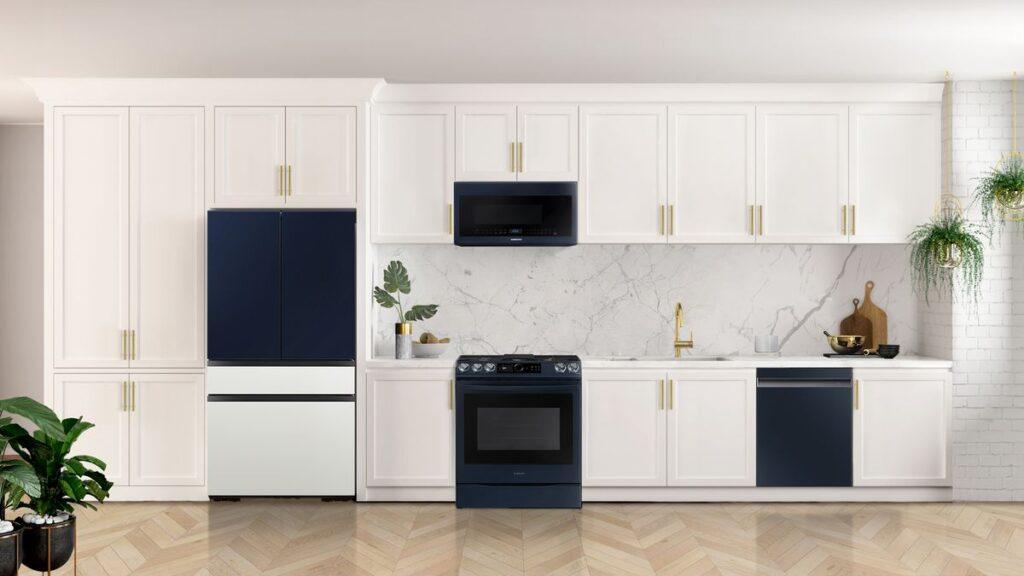During Samsung’s Galaxy Unpacked 2025 event, its SmartThings division unveiled new AI technology that could be set to power the smart-home experience — provided you have a Samsung-based ecosystem, that is.
The new tools will fall under Samsung’s Home AI, and include ‘ambient sensing’, a feature that gathers insights from connected devices around your home and adapts to your everyday life to make your smart home more efficient.
We don’t have a confirmed release date yet, other than a broad 2025-2026 rollout window, which means there’s plenty of time to outfit your smart home with SmartThings-enabled hardware; just keep in mind that most features will likely be exclusive to Samsung’s devices, at least in the short term.
Here are the answers to all your burning questions…
What is ambient sensing?
Chief among these new developments is ambient sensing, where SmartThings devices will be able to utilize advanced sensor technology such as motion and sound detection to monitor your daily activities and create the perfect environment for every moment.
Many of Samsung’s devices have such sensors, from the new Bespoke JetBot Combo AI robot vacuum cleaner to Samsung’s large appliances and the Samsung Music Frame, meaning you may already have a few devices in your home that will benefit from the new ambient sensor technology.
What will Samsung’s ambient sensing do?
Samsung gave a few examples of what its ambient sensing technology will be capable of:
- Human detection and activity monitoring: SmartThings will be able to use sensors to record different activities like push-ups, sleeping or even working at your desk. This information will be used to recommend better practices and improve your environment.
- Health insights and lifestyle recommendations: It’s not just your devices that SmartThings will adjust; to help you stay healthy, SmartThings will provide real-time feedback, such as reminding you to move around if you’ve been sitting for too long.
How might it look in practice? For example, while you’re working out, Samsung says SmartThings will be able to detect what kind of exercise you’re doing, offering guidance on your form and making recommendations on how to increase your gains by changing the length of the workout.
If you’ve just jumped in the shower, the sound and movement of drying your hair can prompt your robot vacuum to pick up the hairs you shed in the process, or create a more ambient atmosphere as you approach your favorite reading chair by switching on the nearby lamp and adjusting the room temperature.
Or if you have a particularly fluffy friend at home that emits waves of fur when it jumps up on furniture, SmartThings can even recognize this and activate your air purifier to remove allergens from the air.
It’s actually a development I discussed with a number of executives at CES 2025, though I couldn’t quite get a sense of how quickly these features could manifest; now I know, and I’m glad it’s going to happen so much sooner than I expected.
Generative AI map view
The fun doesn’t stop there; SmartThings is also set to upgrade its AI Home arsenal with Generative AI technology, namely by adding further personalization to your map view.
Now Samsung says you’ll be able to use your phone camera to take photos of furniture around your home to make Map View more accurate to your style.
This in turn means that you will have a better user experience when it comes to navigating around and interacting with your smart home, as Map View will know where your furniture is and be able to take advantage of the new ambient sensing technology based in close proximity.
Will SmartThings keep my home data safe?
The short answer is, says Samsung, yes.
The longer answer is that Samsung will store all information locally on your network and offer privacy by keeping the data within Samsung appliances and devices rather than relying on the cloud. This means, Samsung says, that your data will not be accessible to third parties without your consent.
Samsung is frankly light years ahead of its smart home competition due to its combination of wide-ranging product categories across home and lifestyle devices, its worldwide popularity and its various partnerships with Google such as for its AI tools as well as its collaboration with the Connectivity Standards Alliance on Matter.



